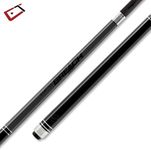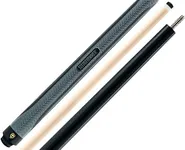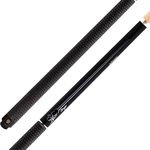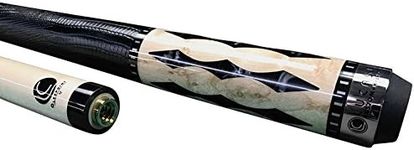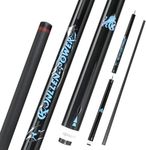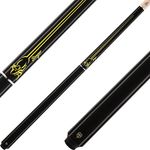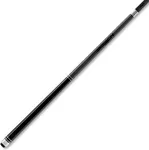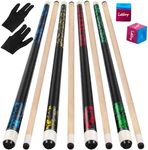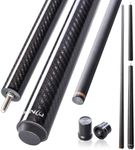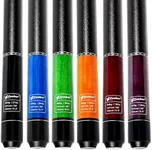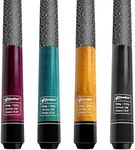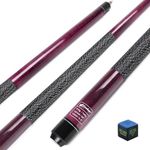Buying Guide for the Best Break Cues
When it comes to picking the right break cues, it's important to consider several key specifications to ensure you get the best fit for your playing style and needs. Break cues are specialized cues designed to provide maximum power and control during the break shot in pool or billiards. Understanding the different aspects of break cues will help you make an informed decision and enhance your game.WeightThe weight of a break cue is crucial because it affects the power and control of your break shot. Break cues typically range from 18 to 21 ounces. Lighter cues (18-19 ounces) allow for faster acceleration and can generate more speed, which is ideal for players who rely on quick, powerful breaks. Heavier cues (20-21 ounces) provide more mass and can help with control and stability, making them suitable for players who prefer a more controlled and steady break. Choose a weight that complements your strength and playing style.
Tip HardnessThe hardness of the tip on a break cue is important because it influences the transfer of energy from the cue to the cue ball. Break cue tips are generally harder than regular playing cue tips. Hard tips (such as phenolic tips) provide a more efficient energy transfer, resulting in a more powerful break. Medium-hard tips offer a balance between power and control. If you are looking for maximum power, go for a harder tip. If you prefer a bit more control and accuracy, a medium-hard tip might be the better choice.
Shaft DiameterThe diameter of the shaft affects the feel and performance of the break cue. Break cue shafts typically have a larger diameter (13-14 mm) compared to regular playing cues. A larger diameter provides more stability and reduces deflection, which can help with accuracy during the break shot. If you prefer a cue that feels more solid and stable, opt for a larger diameter. If you like a cue that feels more like a regular playing cue, you might prefer a slightly smaller diameter.
MaterialThe material of the break cue can impact its durability and performance. Common materials include maple, fiberglass, and carbon fiber. Maple is a traditional choice that offers a good balance of strength and flexibility. Fiberglass and carbon fiber cues are more durable and resistant to warping, making them ideal for players who want a low-maintenance option. Consider your preference for feel and durability when choosing the material of your break cue.
Joint TypeThe joint type of a break cue affects how the cue feels and performs. Common joint types include wood-to-wood, stainless steel, and quick-release joints. Wood-to-wood joints provide a softer, more natural feel, while stainless steel joints offer a more solid and consistent hit. Quick-release joints allow for easy assembly and disassembly, which can be convenient for players who travel frequently. Choose a joint type that matches your preference for feel and convenience.

